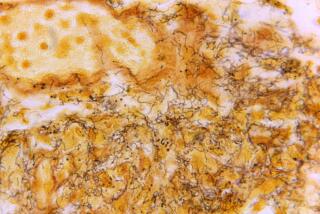False Confidence Sets Back the Anti-AIDS Effort
- Share via
After several years of steady decline in new AIDS cases and deaths and a recent stabilization of new HIV infections, our nation is beginning to see troubling regressions in some populations, particularly among gay and bisexual men and African Americans and Latinos.
For those of us in the health and public policy communities, this shift in the epidemic is a clarion call that we must redouble our efforts--and resources--to urge all Americans at high risk for HIV/AIDS to take steps to stop the spread of the epidemic.
While significant progress has been made in educating the public about HIV/AIDS and in providing better and more effective medical care for those living with the disease, the fight is far from over.
Of paramount importance in this struggle is convincing those who feel they may be at risk for HIV/AIDS to be tested if they have not been.
The Centers for Disease Control and Prevention estimates that almost 300,000 HIV-positive people in the United States do not know they are infected with the virus. Not only are these individuals not receiving vital medical treatment that could prolong and enhance their lives, they may be putting others at risk.
As we fight to get more people tested for HIV, a call to action from another challenging time in our history rings true today: “The only thing we have to fear is fear itself.” Fear of the stigma of being HIV-positive, of the consequences of identifying oneself as homosexual, of the inability to afford or have access to care and treatment--these are just a few of the most commonly cited barriers to getting tested.
For some, HIV and AIDS can still be difficult to talk about. But talk about it we must.
Only by addressing these challenges and replacing these fears with hope can we help stem the resurgent tide of unsafe behaviors in some populations, particularly among young gay and bisexual men.
Events such as Thursday’s National HIV Testing Day are an important first step.
Reaffirming our commitment to prevention is also critical in regaining our momentum in the fight against HIV/AIDS.
Although anecdotal evidence suggests that most Americans are aware of the AIDS “basics,” such as how HIV is transmitted, we cannot relax or relent in our outreach and prevention efforts.
We must continue to educate Americans, particularly our youth, about risky behaviors that can lead to HIV infection and target people who are at risk for HIV infection and do not know it.
Over the past two decades, the HIV epidemic in the U.S. has expanded from one that at first primarily affected whites to one in which the majority of those affected are members of communities of color.
Today, according to CDC estimates, African Americans and Latinos, who make up slightly more than 25% of the U.S. population, are disproportionately affected by the HIV/AIDS epidemic. Yearly, 54% of estimated new HIV infections occur among African Americans and 19% among Latinos.
We must come together as a nation and work hand in hand to address HIV’s disproportionate impact on minorities.
We also cannot tolerate any form of complacency in our efforts to inform our young people about HIV/AIDS.
After years of hearing about declines in AIDS cases and deaths, adolescents and young adults have become overly comfortable and are once again engaging in behaviors that put them at risk. The CDC estimates that half of all new HIV infections occur in people under age 25.
National HIV Testing Day serves as an important reminder: “Take the test. Take control.” Only through a global commitment to individual responsibility can we hope to achieve the ultimate victory: slowing and eventually stopping the spread of this devastating disease.






